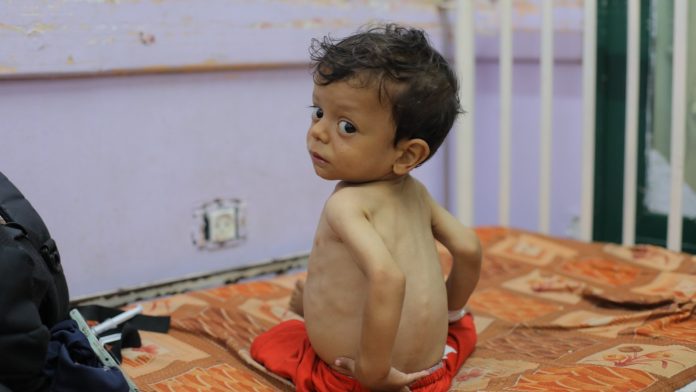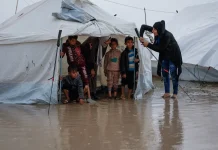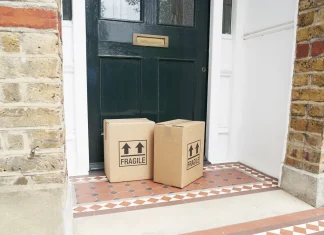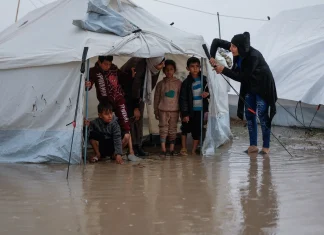
Gaza’s Silent Crisis: Unveiling a Famine at the Heart of Conflict
Nearly two years after the world’s eyes turned to Gaza in the wake of the devastating October 2023 conflict, a new, chilling chapter unfolds—not through headlines about bombings or ceasefires, but through a harsh, enduring reality: famine. The Integrated Food Security Phase Classification (IPC), a respected global monitor of hunger crises, has declared that famine is now gripping Gaza, a tiny but densely packed strip of land that has long been besieged by war, blockade, and hardship.
For many around the world, the word “famine” conjures images of distant African countries grappling with drought or civil war. To hear that the IPC has confirmed famine in Gaza—the first such declaration outside of Africa in over a decade—shakes assumptions and demands our urgent attention.
What Does “Famine” Really Mean?
Before diving into the Gaza situation, it helps to understand how famine is recognized in today’s complex humanitarian landscape. The IPC stands as the gold standard for assessing food insecurity worldwide. Funded largely by Western governments and guided by nearly 20 international humanitarian organizations, the IPC develops its conclusions through rigorous data collection and expert analysis.
The IPC doesn’t hand out the devastating “famine” label lightly or arbitrarily. They use a five-phase scale of acute food insecurity, with Phase 5 as the highest alert. To be officially considered a famine, several stark criteria must be met simultaneously:
- At least 20% of the population must be experiencing extreme food shortages.
- One in every three children in the area is acutely malnourished.
- Mortality rates reach at least two deaths per 10,000 people per day, caused by starvation, malnutrition, or related diseases.
Though the IPC itself doesn’t formally “declare” famine, its analysis often becomes the basis for governments and aid agencies to make such announcements. It is a system grounded in field data—measuring children’s heights and weights or, when impossible, arm circumference—to understand the silent toll of hunger, piece by piece.
The IPC’s Troubling Verdict on Gaza
This November, the IPC’s heartbreaking report confirmed what many Gazans have known for months: famine has arrived in parts of Gaza, especially in densely populated northern areas including Gaza City. According to their findings, around 280,000 people in northern Gaza are facing the worst levels of food insecurity. Surrounding regions—Deir al-Balah and Khan Younis in central and southern Gaza—are projected to reach famine conditions by next month.
Yet the data is incomplete. Ongoing restrictions on access prevent detailed analysis of North Gaza governorate, and the southern Rafah region remains an unknown in this grim equation. This patchy picture itself speaks volumes about the difficulties facing humanitarian responders trying to map and mitigate the crisis.
Voices from the Ground
“We wake up every day hoping for food that might not come,” says Amal, a mother of three living in Gaza City. Her youngest is visibly thin, struggling with repeated illness. “It’s not just hunger—it’s the fear of what hunger steals from our children—not just their strength, but their future.”
Local doctors echo this desperate reality. Dr. Nabil Hassan, a pediatrician working with a small clinic there, explains, “The number of malnourished children is alarming. We see kids whose muscle tissue wastes away and whose immune systems collapse. It’s a crisis of survival, unfolding behind walls and checkpoints that keep aid out.”
Why Has it Taken So Long—and Why Now?
Famine in Gaza is the culmination of many factors: a fractured political landscape, recurring violence, economic blockade, and global geopolitical inertia. The IPC’s slow response has not gone unnoticed—critics argue that its cautious methodology delays aid and international attention when every day counts.
Moreover, Israel’s government has contested the IPC’s findings, calling for caution over such declarations amid political tensions. Yet, experts emphasize that a famine classification is not a political statement—it is a cry for urgent humanitarian intervention.
Professor Lina Al-Amour, an expert in Middle Eastern humanitarian crises, warns: “The longer famine festers unnoticed or unaddressed, the higher the long-term human, social, and economic cost. It’s not only Gaza’s tragedy. When famine strikes anywhere, it challenges global norms about human rights and justice.”
Famine’s Global Resonance
Gaza’s famine is not an isolated tragedy; it resonates within wider global conversations about food security, conflict, and displacement. As climate change exacerbates food shortages worldwide and conflicts disrupt supply chains, millions are pushed to the brink—raising difficult questions about our global responsibility.
How might Gaza’s plight change the way we think about hunger in geopolitically sensitive zones? Can the international community learn from this crisis to better anticipate and address famines—not only with emergency food but through systemic political solutions?
Breaking the Cycle: What Comes Next?
The IPC report, while grim, serves a crucial purpose: to catalyze action. With tens of thousands dying daily under famine-like conditions globally, time is a luxury Gaza cannot afford.
Immediate measures include lifting blockades, ensuring safe corridors for humanitarian aid, and scaling up food and nutrition programs. But long-term peace and stability demand more—dialogue, justice, and empowerment.
Key Steps to Address Gaza’s Hunger Crisis:
- Secure unfettered access for food and medical aid providers.
- Implement nutrition-specific interventions focused on children’s health.
- Support local agricultural production and food resilience projects.
- Invest in infrastructure rebuilding, including water and sanitation.
- Promote diplomatic efforts toward political solutions that end chronic conflict.
As global citizens, the challenge before us is clear. How do we balance political complexities with humanitarian imperatives? How do we ensure that a strip of land less than half the size of London doesn’t silently sink beneath a wave of preventable deaths?
Final Thoughts: Seeing Famine Beyond Statistics
Behind the numbers—the 20%, the 280,000 people—the famine in Gaza is a mosaic of individual lives, families, and dreams at risk. Each child wasted by hunger is a universe of potential lost. Each family struggling with poverty and disease teaches us lessons in resilience and hope.
As the world absorbs the IPC’s declaration, let us do more than pity or political debate. Let us listen—to Amal’s story, to the doctors’ pleas, and to the silent cries of millions caught in the web of conflict, hunger, and neglect.
Because famine is not just about food. It’s about dignity, survival, and the radical courage required to face tomorrow when today offers so little.
What can we do? How can we act? And how can the story of Gaza transform our understanding of global solidarity in an increasingly fragile world?
The answers are not easy, but the urgency is unmistakable.









